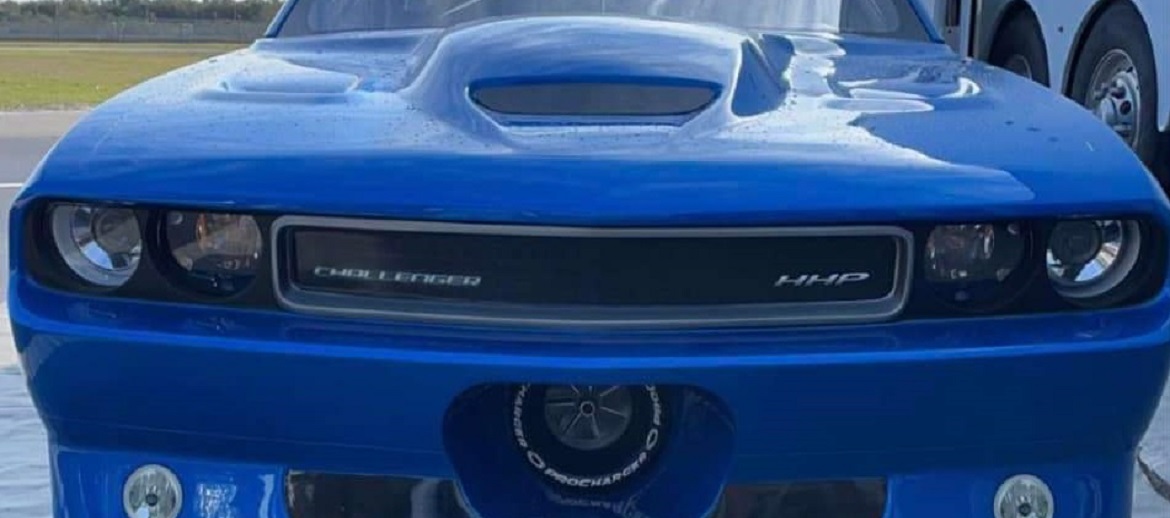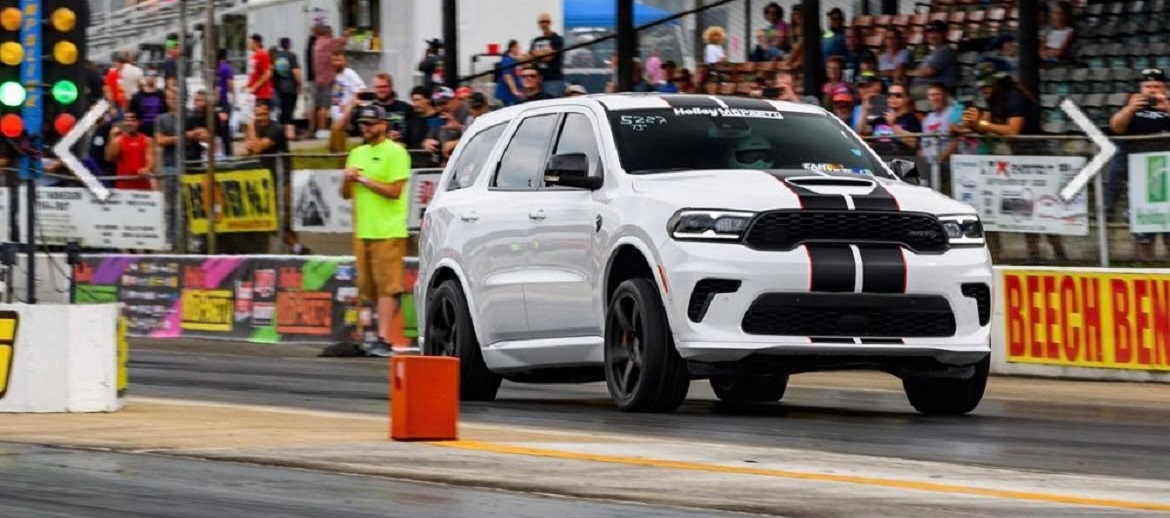Rob Goss Runs a 3-Second 8th Mile in his Dodge Challenger
2 years ago Owners + Clubs
We talk about a great many crazy-quick modern Dodge drag racers, but recently, Rob Goss became the first modern Dodge Challenger owner and Gen III HEMI® engine-powered vehicle racer to cover the 8th mile in the 3-second range. Mind you, Goss’ Challenger has been the quickest and fastest modern HEMI engine-powered Dodge racecar in the 8th mile for a few years now, but in breaking into the 3-second range, he has raised the bar for the rest of the Mopar® racing community.
For those of you who aren’t familiar with Rob Goss and his Dodge Challenger, he has spent the past few years competing in – and winning in – the X275 class. However, in late 2022, Goss has made the decision to move to the Limited Drag Radial (LDR) class. This allowed him to add power and cut weight, leading to new personal best times and a membership in the 3-second 8th mile club.
Rob Goss and the Dodge Challenger
Over the past few years, Rob Goss’ black Challenger with a unique front fascia and the bright green ProCharger decal on the rear quarter panels have become quite familiar to Mopar® racing fans. As one of the quickest cars and top drivers in the popular X275 class, Goss has done a remarkable job of representing the Dodge brand and in doing so, he has accumulated plenty of fans. What his fans may not know is that Goss was one of the first people to go racing with a heavily built modern Dodge Challenger when they came to market back in the mid-2000s.
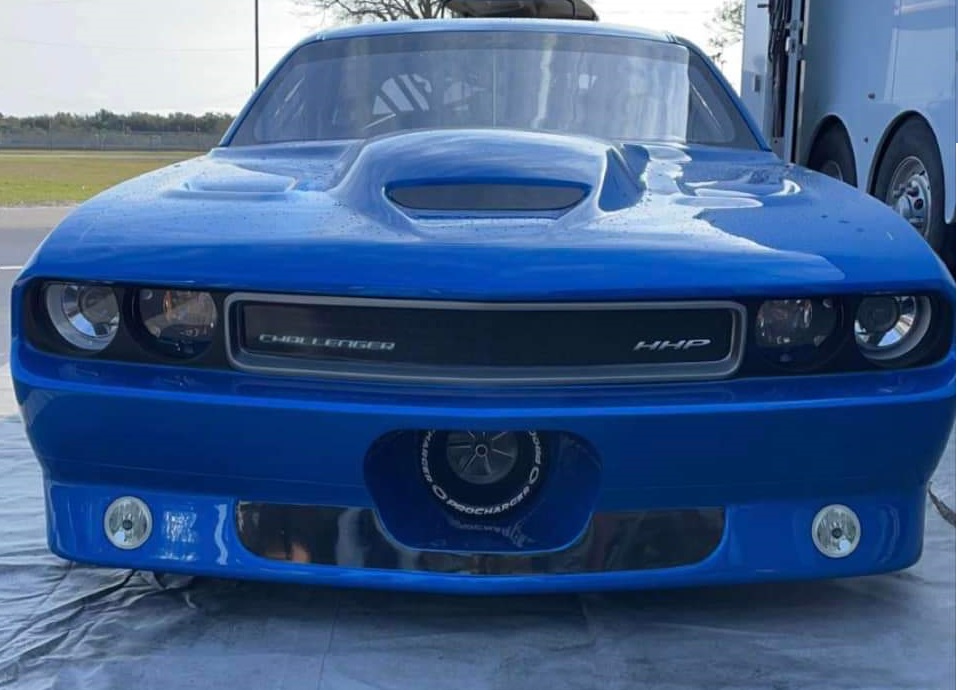
“I bought a street Challenger in 2010 and immediately started modifying it to the point I was asked to not come back to the drag strip with it until I put a cage in it,” said Goss. “I didn’t want to do that as I feel a cage in a street car is a safety concern with the bars in areas you can hit and be hurt by doing so. I also didn’t want to stop racing so I found and bought another car. It ran mid-8-second ¼-mile times then. Bruce Maichle (Goss’ crew chief) then tore it down and began building the first X275 car.”
Once he got into the X275 class, Goss could focus more on going fast and less about his car being safe for the street. However, he didn’t jump into X275 and begin stacking up wins. It took years of careful tuning and seat time, constantly making adjustments to progressively get quicker, but the effort paid off in a big way. Some of the people who race a Dodge product today may take for granted the ease with which we can get into the 9-second range. Thanks to the arrival of the SRT® Hellcat models, there is a pretty simple formula of aftermarket upgrades that you can add that will lead to the 9s and even the 8s, for those with deep enough pockets. We can look at what other racers have used to get to a certain point in the past and with that information, we can plan our own builds.
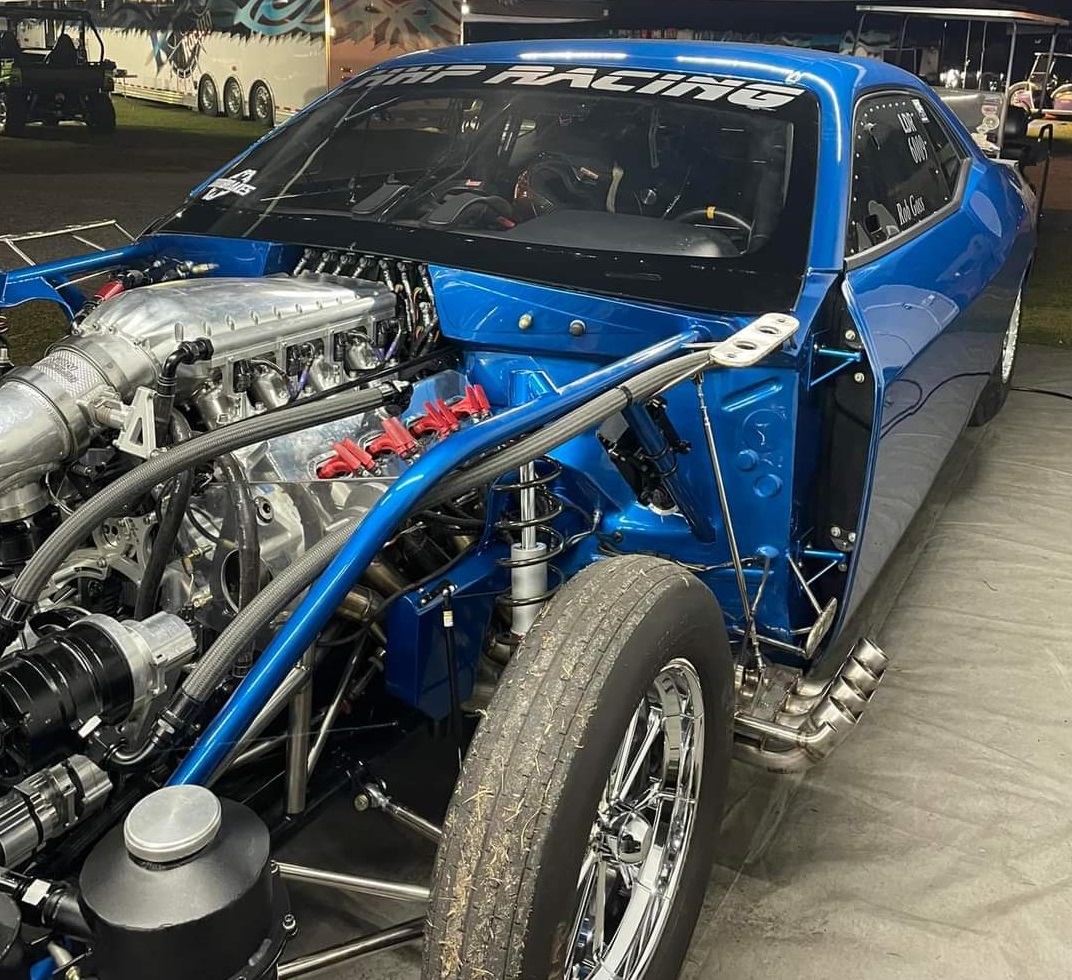
However, back in the mid-2000s, there was really no one for Rob Goss to look to in terms of building a 7-second Dodge Challenger. The modern Mopar aftermarket was in its infancy and in some cases, Goss and his team would have had to custom engineer many of the highest performance parts. As a result, it took some time to catch up to the field, but as time went on, he climbed to the head of the X275 class.
“We were so slow back then, didn’t even qualify for the first few races we went to. That next fall, we ran a 7.80 at 180 mph and went into the winter feeling OK about things. Tore it apart a bit more, came out and ran a 7.30 at 190 something. We kept up that same process of working continuously throughout the years, never being satisfied with anything we were able to do. We have won many races, set a bunch of records even beyond our own platform, class records that cover all cars, won back-to-back championships. Looking back from where we started, I couldn’t have imagined this level of success,” said Goss.
“I attribute it to never being happy or satisfied with our performance. We look ahead and build ahead. Even today, after swapping classes, we have new stuff that will be ready to test in the coming months that will hopefully improve our performance further. These things aren’t big things, they don’t generally take the most cost and effort to do. In thinking about it as I type this out, it’s a little like stacking pennies, after a while you have a dime. It’s the same with racing, keep stacking those thousandths and pretty soon you have a hundredth. Basically don’t overlook anything; it all adds up and matters.”
Goss went on to explain that, while he has won a ton of races in his career, there are a few that stand out in his mind.
“Our first-ever win as a team was at World Cup Finals in Maryland, must have been 2015 or so. That was special because it was our first. The most emotional win was our first win at Donald Long’s race in South Georgia. Winning there is big, all the best teams race there; it was where we first raced and couldn’t even qualify for. Making headway over the years to the point we won was a huge moment for us.”
However, after loads of success in X275, Goss and his team made the jump to the new Limited Drag Radial class, which included a new look, a new engine combination and, of course, a new record for the world’s quickest and fastest Gen III HEMI engine-powered Dodge Challenger in the 8th mile.
The LDR Build
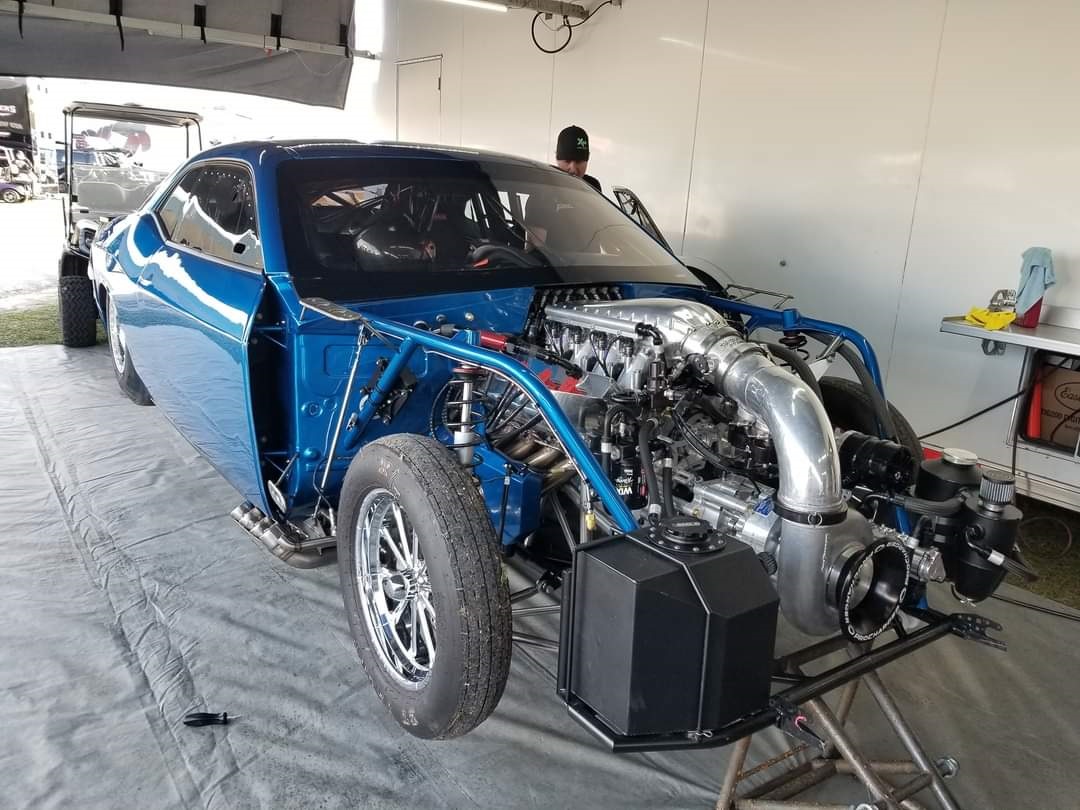
The Dodge Challenger that Rob Goss has been campaigning for the past few years started its life as a factory Drag Pak car and it still retains quite a few of the key factory components, including the firewall, the door frames, the floor, the rear quarter panels and the rear quarter glass, but the rest of the car has been dramatically modified – first for X275 and then for Limited Drag Radial. As for the majority of the body panels, such as the front clip, the hood, the doors and the trunk lid, they are all made of lightweight carbon fiber while the chassis has been lightened through extensive use of titanium. This leads to a weight of under 2,700 pounds when the car hits the track.
“We took about 150 lbs out of the car during the 8-week rebuild of it from a X275 car to what it is currently. The weight came from different areas but a very large portion came from the use of titanium. We used titanium in every area imaginable and available to us. Huge credit for that goes to Mike Carbone at MPH Fabrication (the chassis shop). He invented/used an ingenious way to attach the titanium to the chromemoly chassis. One issue with using titanium is that it cannot be welded to steel. With that, the areas of use have been limited in the past. Mike found a workaround and we used it in new areas, allowing us to get more weight out.”
The next big change for the switch from X275 to LDR is the supercharger. In the past, Rob Goss used a ProCharger with a 102-millimeter inlet, but for the new build, he is running a ProCharger with a 136-millimeter inlet. The larger supercharger allows for more air movement and that leads to more power.
As for the other aspects of the engine, the Gen III HEMI in Goss’ Challenger measures 478 cubic inches, with the engine block and cylinder heads both being parts made by crew chief Bruce Maichle. Like all of his engines, the current powerplant was built by BES.
“My engines are and always have been built by BES. They have been with us from the start and have helped develop these engines from not so reliable – and best described as kinda slow – to what now carries extra weight over all small block to the point a Ford and Chevy SB engine can weigh 250-350 lbs less, depending on the class. We’ve come a long way.”
The power from that monstrous supercharged HEMI engine is sent toward the rear wheels by means of a Coan transmission and convertor, and Goss credits those Coan components as being a huge part of his team’s success over the years. A Mark Williams rear differential and a set of 295/65/15 drag radials put the power to the ground.
This combination allowed Rob Goss to become the first modern Dodge Challenger driver and the first Gen III HEMI engine-powered vehicle racer to run a 3-second 8th mile. As you can see in the video below, he ran a 3.944 at 184.72 miles per hour. He would back up this run in the next round with a 3.956 at 180.04 miles per hour.
